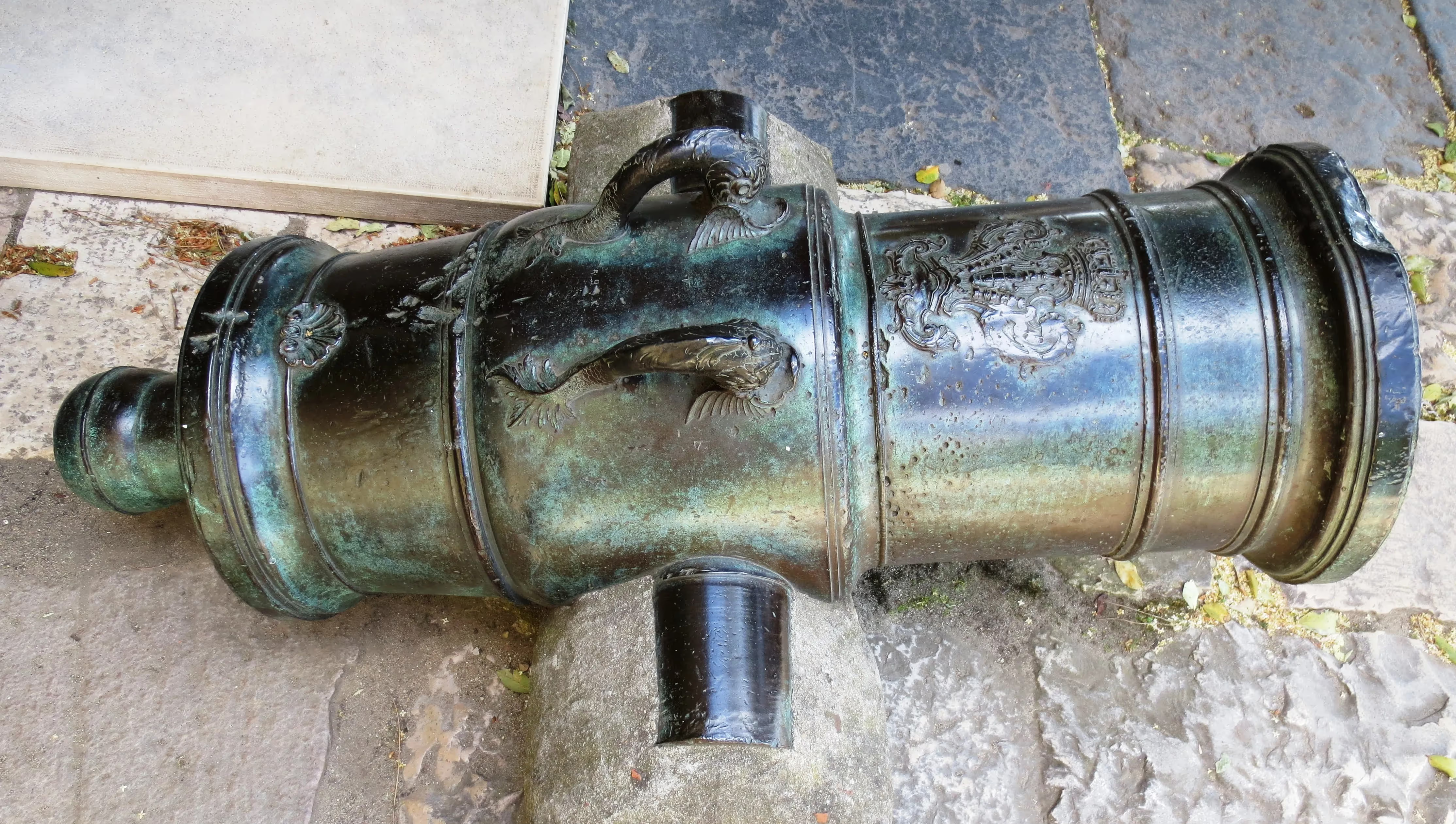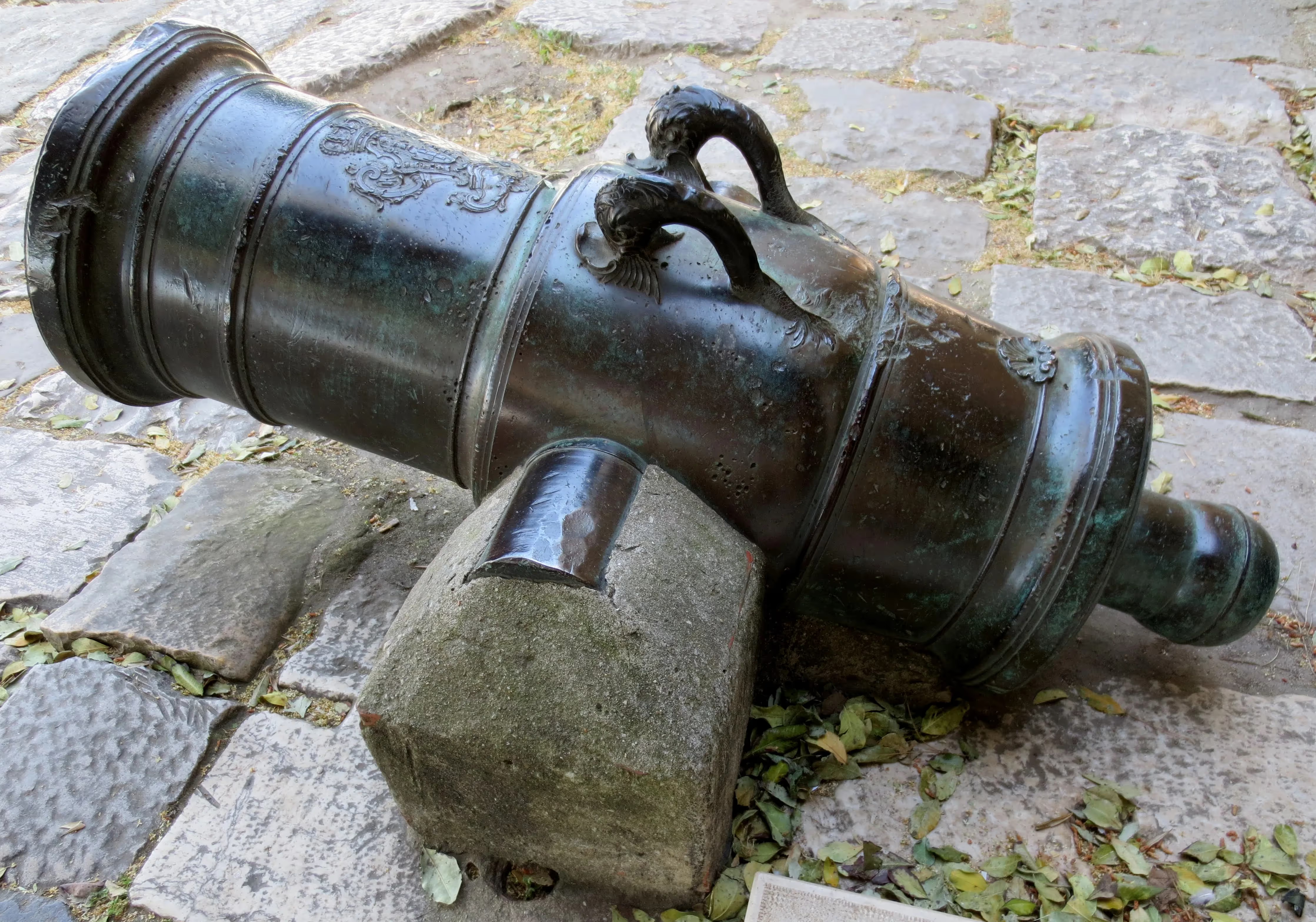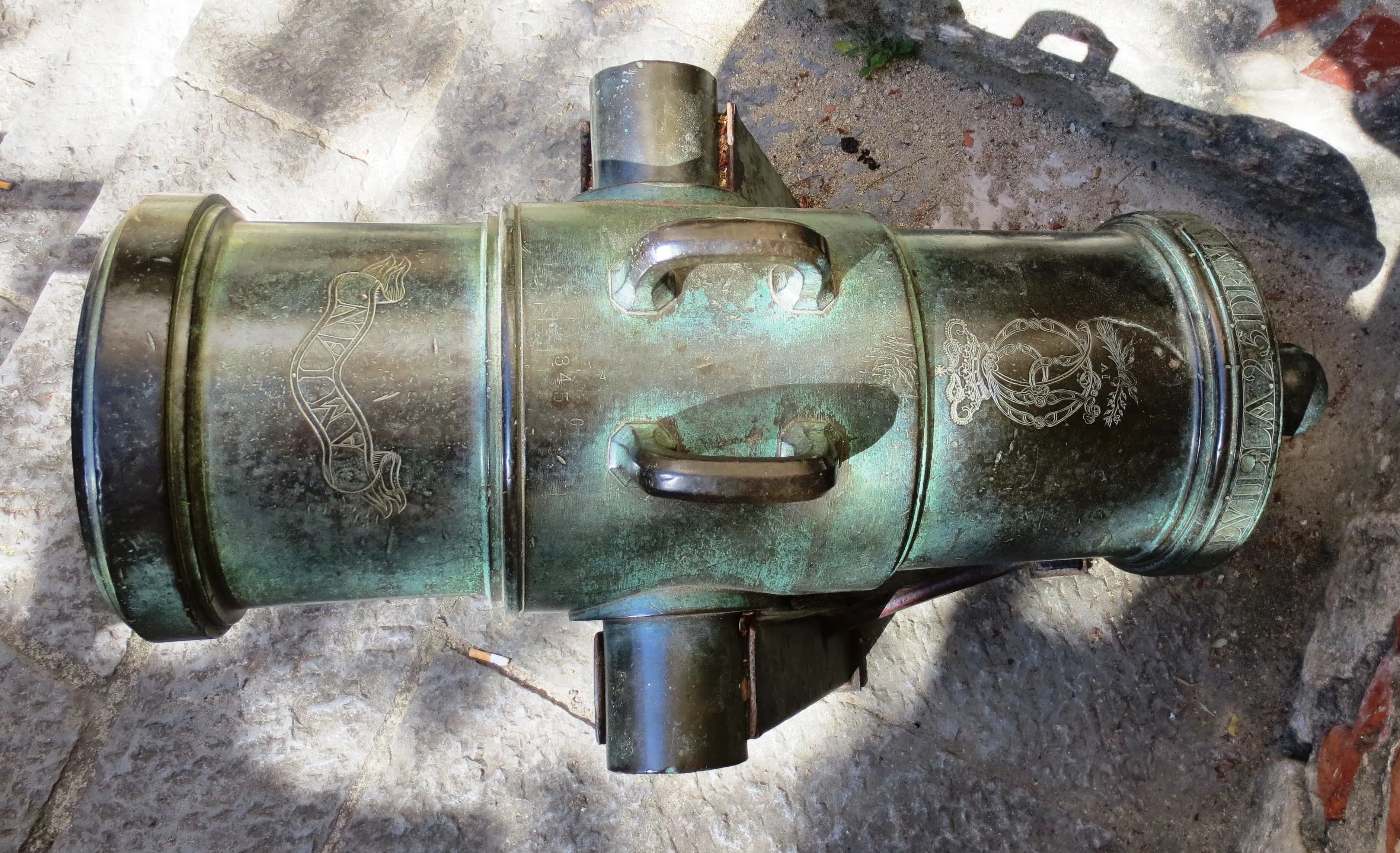Artillery in Portugal: Lisbon, Tower of Belém and Castelo de São Jorge
Artillery preserved in Lisbon,
Tower of Belém and Castelo de São Jorge
The aim of this website is to locate, identify and document every historical piece of artillery preserved in Portugal. Many contributors have assisted in the hunt for these guns to provide and update the data found on these web pages. Photos are by the author unless otherwise credited. Any errors found here are by the author, and any additions, corrections or amendments to this list of Guns and Artillery in Portugal would be most welcome and may be e-mailed to the author at [email protected].
Artilharia preservada em Portugal (Parte 6)
Lisbon, Torre de Belém e Castelo de São Jorge
O objetivo deste site é localizar, identificar e documentar cada peça histórica de artilharia preservada em Portugal. Muitos
colaboradores ajudaram na busca por essas armas para fornecer e atualizar os dados encontrados nessas páginas da web.
As fotos são do autor, salvo indicação em contrário. Quaisquer erros aqui encontrados são do autor, e quaisquer adições,
correções ou alterações a esta lista de armas e artilharia em Portugal serão bem-vindas e podem ser enviadas por e-mail
ao autor em [email protected].
Tower of Belém
The Tower of Belém, with its water-washed dungeons below, was built in 1519 in the middle of the Tagus River. The course of the river has moved over the centuries and the tower now stands on the embankment. The Discoveries Monument was erected in 1960, to commemorate the death 500 years before of Henry the Navigator. There is an excellent view of the Lisbon shore from the top of the tower.

The Tower of Belém.

The Tower of Belém has 15 replica smooth bore breech loading cannon mounted on wooden gun carriages arrayed around gun ports of the main deck of the fortification.
City Park, near the Calouste Gulbenkian Planetarium
Cast Iron 9-cm Smoothbore Muzzleloading Gun, 16th century, with the Coat of Arms of Pope Gregory XIII cypher on the barrel. (Gregory III attempted to remove Queen Elizabeth I (Protestant) from the English throne and convert England to Catholicism - it didn't work out). The gun is No. 1 of 2 mounted on concrete stands in the park.


(manchanegra Photos)
Cast Iron 9-cm Smoothbore Muzzleloading Gun, 16th century, with the Coat of Arms of Pope Gregory XIII cypher on the barrel. The gun is No. 2 of 2 mounted on concrete stands in the park.
Castelo de São Jorge
.avif)
.avif)
.avif)
.avif)
.avif)
.avif)
(Author Photos)
The Castelo de São Jorge (Castle of São Jorge) is a Moorish castle occupying a commanding hilltop overlooking the historic centre of the Portuguese city of Lisbon and the Tagus River. The strongly fortified citadel dates from medieval period of Portuguese history, and is one of the main tourist sites of Lisbon. The castle is located in the centre of city of Lisbon, over an escarpment, while many of its walls extend around the citadel into the civil parishes that surround it to the east and south.
The castle's footprint is roughly square, and it was originally encircled by a wall, to form a citadel. The castle complex consists of the castle itself (the castelejo), some ancillary buildings (including the ruins of the royal palace), gardens, and a large terraced square from which an impressive panorama of Lisbon is visible. The main entrance to the citadel is a 19th-century gate surmounted by the coat-of-arms of Portugal, the name of Queen Maria II, and the date, 1846. This gate permits access to the main square (Praça d'Armas), which is decorated with old cannons and a bronze statue of Afonso Henriques, the Portuguese monarch who took the castle from the Moors. This statue is a copy of the 19th-century original by the romantic sculptor, António Soares dos Reis, which is located near Guimarães Castle in central Portugal.
The remnants of the royal palace are located near the main square, but all that is left are some walls and a few rebuilt rooms like the Casa Ogival. It now hosts the Olissipónia, a multimedia show about the history of Lisbon.
The medieval castle is located toward the northwest corner of the citadel, at its highest point. Hypothetically, during a siege, if attackers managed to enter the citadel, the castle was the last stronghold, the last place available to take refuge. It is rectangular in shape, and it has a total of ten towers. A wall with a tower and a connecting door, divides the castle courtyard into halves. A series of stairways allow visitors to reach the walkway atop the wall and the towers, from which magnificent views of Lisbon can be enjoyed. The Tower of Ulysses (where the Torre do Tombo archive used to be) now has a periscope that allow tourists to have a 360-degree view of the city.
Apart from its main walls, the castle is protected, on its southern and eastern sides, by a barbican (barbacã), a low wall that prevented siege engines from approaching the main castle walls. The northern and western sides of the castle, on the other hand, were naturally protected by the steep hillside sloping downward from the castle's foundations. The castle is also partially encircled by a moat, now dry. The main entrance is fronted by a stone bridge across the moat. On the west side, there is a long curtain wall extending downhill, ending at a tower (the Torre de Couraça). This tower served to control the valley below, and it could also be used to escape, in case the castle was taken by enemies.

Afonso I (25 June 1109, Guimarães or Viseu – 6 December 1185, Coimbra), more commonly known as D. Afonso Henriques, nicknamed "the Conqueror" (o Conquistador), "the Founder" (o Fundador) or "the Great" (o Grande) by the Portuguese, and El-Bortukali ("the Portuguese") and Ibn-Arrik ("son of Henry", "Henriques") by the Moors whom he fought, was the first King of Portugal. He achieved the independence of the southern part of the Kingdom of Galicia, the County of Portugal, from Galicia's overlord, the King of León, in 1139, establishing a new kingdom and doubling its area with the Reconquista, an objective that he pursued until his death, in 1185, after forty-six years of wars against the Moors.


Cast Iron Smoothbore Muzzleloading Gun, stamped XI, overlooking the Tagus River from the castle walls.

Blomefield pattern 12-pounder Smoothbore Muzzleloading Gun, weight 30-0-1 (3,697 lbs), overlooking the Tagus River from the castle walls.



Blomefield pattern short 24-pounder Smoothbore Muzzleloading Gun, weight 40-1-18 (4,526 lbs), 1824.




Blomefield pattern short 24-pounder Smoothbore Muzzleloading Gun, weight 40-1-4 (4,512 lbs), under P, J & S, 1824, on the barrel, mounted on a wooden carriage.







Portuguese 10-pounder Smoothbore Muzzleloading Gun, mounted on a wooden carriage looking west from the castle walls.
114-mm bore would be about 10-pounder Imperial. 10-pdr was a common bore size used in Spain and Venice. The formula is inches Imperial cubed times .134 for an iron shot. With allowance for windage common in the period of 1/20th ball diameter, that would be 4.488" / 21 x 20 (1/20th ball for typical windage in that period) cubed, times .134, or about 10.465-pdr Imperial measure. That would be very near 10-pdr in the "poids" used by France and those influenced by France's cannon industry. It would be about 15-libre Venetian weight, also common then (about .66 pounds English) and a leader in the gun casting industry in the Mediterranean region. (Mark Thomason)








Bronze Smoothbore Muzzleloading Mortar, weight 9-3-12 (1,104 lbs) with Dolphin carrying handles, unmounted, No. 1.





Bronze Smoothbore Muzzleloading Mortar, weight 16-0-13 (1,805 lbs) with Dolphin carrying handles, unmounted, No. 2.





Bronze Smoothbore Muzzleloading Mortar, with Dolphin carrying handles, LA 29 DES DPTIEM on the barrel below the touchhole, N 11, COBRES DE CEMENTACION Y LIMA on the left trunnion, P.740 on the right trunnion, unmounted, No. 3.








Bronze Smoothbore Muzzleloading Mortar, with Dolphin carrying handles, No. 2948 SEV under a coat of arms on the barrel, COBRE DE LIMA on the left trunnion, P.705 on the right trunnion, unmounted, No. 4.




Bronze Smoothbore Muzzleloading Mortar, with Dolphin carrying handles, weight 4-0-28 (476 lbs), MARIA II under coat of arms, with VAL REAL DO ECECIT on the barrel, No. 23 on right trunnion, unmounted, No. 5.




Bronze Smoothbore Muzzleloading Mortar, with Dolphin carrying handles, unmounted, COBRES DE MEXICO, RIOTINTO Y LIMA on left trunnion, Po./45P on right trunnion, VII LA 25 DEMA below the touchhole on the barrel, No. 6.

View of the castle walls from the city centre.





